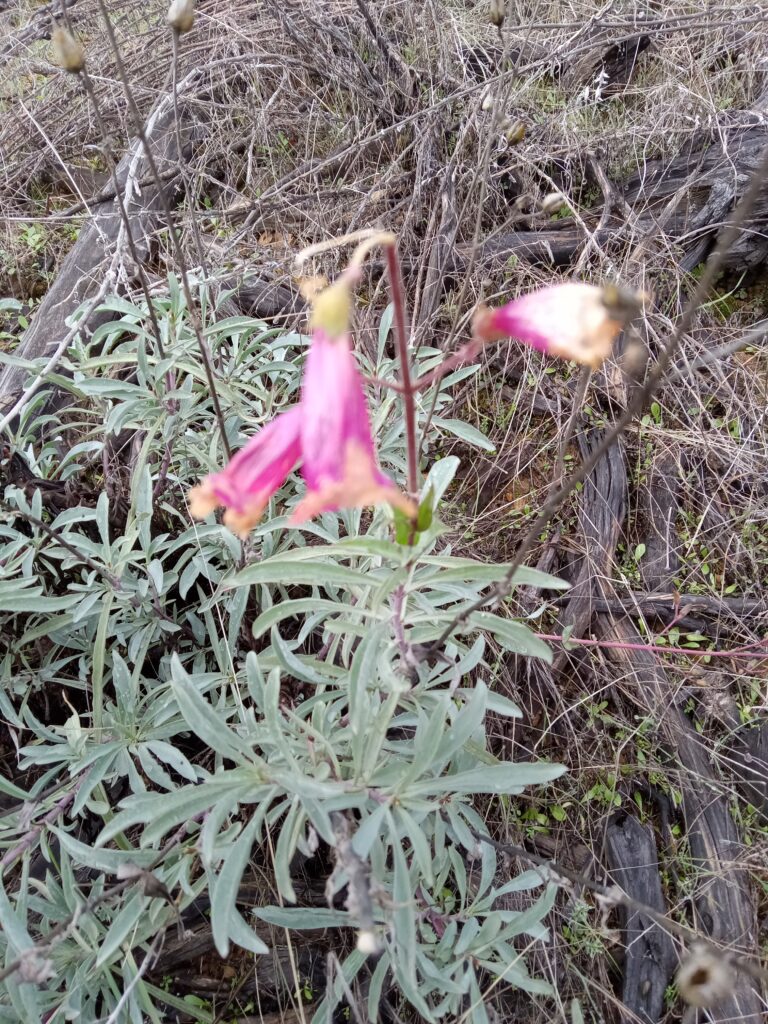
Photo by David Ledger of Penstemon (blurry but beautiful still!)
This field trip near Shasta Lake and above the Sacramento River provides a gentle climb of 700 feet in a vegetative habitat of mixed conifer, oak woodland, and chaparral over a 2.3-mile upward climb to the top and a 4.6-mile total hike. The field trip was postponed one day due to rain but it was for the good as this is a very popular weekend trail and with a thick cloud cover we saw few hikers until the return trip.
The most common conifer on the trail is knob cone pine, interspersed with a few gray pines and ponderosa pines near the top. Black, blue, and canyon live oaks were the most common broad-leaf trees. For shrubs, white-leaf manzanita was the most common, many 20 feet tall. Other shrubs included coffeeberry, Lemmon’s ceanothus, deer brush, and redberry. Keckiella sp. (most likely Lemmon’s) and, of course, toyon.
An interesting herbaceous plant we did see in bloom was Penstemon underneath the powerlines. Most of the Lemmon’s ceanothus and cudweed were also under the powerlines.
Despite the last-minute date change for the field trip due to rain, we had a cheerful group of nine hikers who made it to the peak. The cloud cover began to lift after we reached the top and we could make out Shasta Dam and the Sacramento River but not Mt. Shasta.
As to why there were no chamise shrubs on Chamise Peak, one can only speculate. At one time one can assume it did grow there due to the name and it does grow just about a mile to the north next to the road to Shasta Dam. It is possible either it was killed by the pollution from the copper smelters 100 years ago or there was a fire that killed it. If it was a fire, it wasn’t too hot as some of the canyon live oaks looked to be over 200 years old. Either way, smelters or fire it was out-competed by other vegetation. It was most likely over-topped by the white leaf manzanita, which was quite tall for this manzanita the black oaks and canyon live oaks also out-competed it eventually lo the fight for sunlight.
Next time you drive back from Weaverville, look at the tall hills to the north of the highway. Most of this is solid chamise. It outcompeted the other shrubs and trees in the fight for sunlight and nutrients, plus chamise thrives in full hot sun. This is a great place to take a hike but it is best on the weekdays as it is fairly busy on weekends.